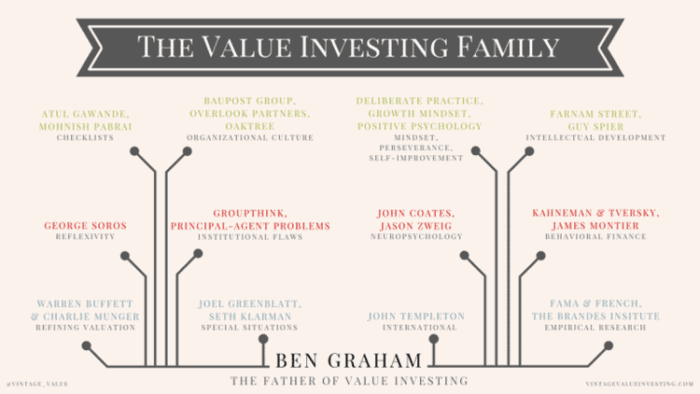
“An investment operation is one which, upon thorough analysis, promises safety of principal and an adequate return. Operations not meeting these requirements are speculative.” – Benjamin Graham
To find accurate value investing tools you’ll need time, a lot of it to do your homework. Finding the right tools requires a lot of research. It is the same as finding a good value stock to invest in. It can be so complicated that many investors are scared of all that job.
But if you don’t like to do your own research, here are some tricks to help you.
By having the value investing tools to value a company and evaluate its prospects, you can eliminate unsuitable stocks. Also, you can do it more quickly and focus on the best picks. One of the most accurate among value investing tools is the P/E ratio.
P/E ratios as value investing tools
The price-earnings ratio or P/E ratio is classified as a primary tool to identify undervalued or cheap stock. It is a simple metric that is easy to calculate. All you have to do is to divide a stock’s price per share by its earnings per share. Earnings per share is shortly expressed as EPS. Value investors always have the P/E ratio in their value investing tools boxes and seek a low P/E ratio. A lower ratio means that they will pay less per each dollar of the company’s current earnings.
But this metric has some downsides. Of course, it is still a good start but if you rely on this one measure solely it is more likely your strategy will not be accurate and successful.
Investors are frequently attracted by low P/E ratio stocks. The problem is that they can be inaccurate and inflated numbers. Sometimes, companies report incorrectly high earnings sums or some forecasts show much higher earnings, so the low P/E ratio can be false. Everything becomes more clear after real earnings reports and the P/E ratio goes up and investors’ research result is false too.
So, if you use the P/E ratio alone you’ll end up trapped with the wrong decision.
Use PEG ratios as value investing tools
If the P/E ratio is flawed, what should you do to find true value stocks? Which one of the value investing tools you have to use? PEG ratio will help you to recognize if a company with earnings growth is trading below its intrinsic value. The price-to-earnings ratio or PEG ratio can help you to avoid some traps while searching for value stocks. To calculate the PEG ratio use this formula:
PEG Ratio = Price To Earnings Ratio / Earnings Growth Rate
If the PEG ratio is less than 1 it is supposed to be a sign of an undervalued stock and it is possible to buy such stock at discount. So, the PEG ratio of 1 means the company is correctly valued. Contrary, if the PEG ratio is above 1 it may indicate that a stock is too expensive. But the PEG ratio shouldn’t be used as an individual metric. The valuation puzzle requires using other value investing tools to have a comprehensive picture of the stock’s value.
For many investors, the PEG ratio is a favorite among value investing tools due to its ability to show the stock that is at discount. However, as with all of the value investing tools the PEG ratio is useful to recognize the stock that could deserve a closer look. You’ll need more research and tools to reveal the possibility that the stock is cheap for a reason, in which case it isn’t the right choice. Simply, you wouldn’t want such stock in your investment portfolios.
But keep in mind, for example, various industries will have different PEG ratios. So be careful when judging the company’s value.
The company’s cash flow
The company is worth only the amount of the future cash flows it can make from its operations. Keep this in mind. The value investors will always check the company’s cash flow before starting to invest.
As we noticed above, the P/E ratio is by no means a complete measure. The company’s net income is only an accounting entry and it is often influenced by numerous non-cash costs, for example, by depreciation. Also, companies use tricks to misrepresent their earnings. As a difference, cash flows measure the real money that the companies paid out or acquired over a given period.
Cash flows exclude the influence of non-cash accounting charges. They don’t include depreciation or amortization. So they are more objective value investing tools because they only admit the real cash that flows into or out of a company. Cash flows are a clear picture of the company’s real profitability. However, we have to repeat, it makes no sense to estimate cash flows as the only tool you use when seeking the value investment.
Enterprise value
It is important to compare operating cash flow to the company’s Enterprise Value if you want a clearer picture of the amount of cash the business is generating related to its total value.
To explain the enterprise value.
It is as a number that in theory outlines the full cost of a company if someone buys 100% of it. If the company is publicly-traded, this means buying up every single of the company’s shares.
To calculate it you have to sum up the company’s market capitalization, add debt, preferred stock together, and subtract out the company’s cash balance. The result will show how much money an investor or group of them would need to buy the whole company. So, it is an outstanding picture of the total value of the company.
When you divide a company’s operating cash flow by its enterprise value, you can easily calculate the company’s operating cash flow yield.
These measures are also the value investing tools. Especially cash flow yield because it presents the amount of cash that the company generates per year in comparison to the total value investors invested in the company.
Return-on-Equity – ROE is excellent for value investing tool
ROE is another excellent tool that can help you to find value stocks.
It is a profitability ratio and measures the ability of a company to generate profits from its shareholders’ investments. To put it simpler, the ROE shows how much profit generates each dollar of stockholders’ investment generates.
The ROE of 1 indicates that every dollar of stockholders’ investments generates 1 dollar of net income. This measure shows how efficiently a company uses investors’ equity to generate net income.
ROE is also an indicator of how efficient management is.
The formula is
ROE = Net Income / Shareholders’ equity
This measure is broadly used, and it is easy to find the ROE lists for publicly traded companies on almost all financial websites. When investors look for value investment opportunities, they are looking to find a stable or growing ROE of the company.
However, there are some cautions. For example, some companies can produce enormous ROE in one year, but the next one or more years later resulted in reduced profitability.
Also, the tricky part is the relationship between ROE and debt. For example, if the company is taking higher debt loads it is possible to use debt capital instead of equity capital. Such a company will have a higher ROE. These companies with exponential and fast growth can be favorable, but also, can ruin shareholder value. Investors prefer ROE at around the average of the S&P 500.
Bottom line
Sadly, there’s no fixed method that will provide investors a distinct way to reveal the best value stock for investing. Investors have to take into consideration the company’s sector and industry, also, if the company has an advantage over its peers. Look for the companies that are able to become brands, or have some unique product, the new technology, in other words, with a sustainable competitive advantage.
Remember, some companies operate in a cyclical market. For example, automakers. Such companies will have great growth and huge returns in periods of the rising economy but they will fail if the economy is in a slowdown. So think about the company’s profitability under all conditions.
These value investing tools will help you to uncover plenty of potential picks and to find a good stock to invest with trust.



